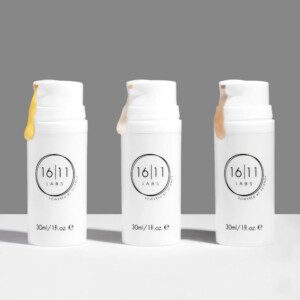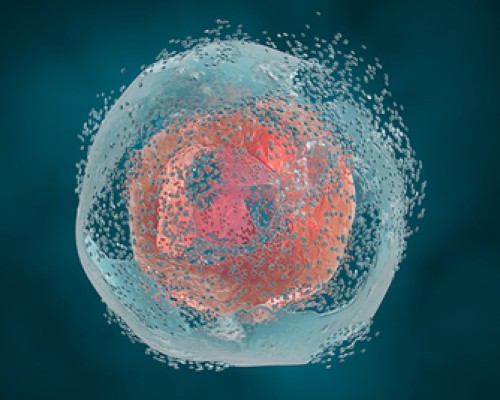“Senescent cells, also called ‘zombie cells’, are aged cells which can no longer divide/replicate. But instead of being naturally removed, they remain in the skin, impacting their immediate environment, inducing a vicious circle of inflammation and premature ageing”
Cellular senescence is a self-defence mechanism activated by our body in response to stress. ‘Senescence’ means the end stage in a cell’s life cycle when it stops dividing. It is a natural occurrence within the skin; and one of the primary processes behind biological ageing. It stops cells from replicating/dividing when under induced stress.
Different stresses can activate the signaling pathways of cells leading to senescence.
Senescence is physiologically important for tissue repair, wound healing, and prevents carcinogenesis. However, chronic accumulation of persisting senescent cells contributes to many pathologies including premature skin ageing.

When younger, senescent/aged skin cells are quickly cleared away and replaced with regenerated new cells. As we age, senescent cells have been found to accumulate/increase. When they linger, they secrete biochemical signals that induce chronic inflammation, suppressing the immune system, and accelerating aging in neighboring cells.
Senescent cells drive neighboring cells into senescence, triggering widespread damage that contribute to age-related skin changes and pathologies.
High levels of senescent cells damage the skin barrier, once the skin barrier is damaged; this triggers chronic, low-grade inflammation, coined inflammaging. This leads to a cascade of skin conditions such as dehydration, texture irregularities, pigmentation, and fine lines & wrinkles.
TREATMENTS
Natural and synthetic agents known as senotherapeutics have been reported to have effects against senescent cells. Classified into two major subcategories, senomorphics and senolytics.
Senomorphics help target senescent cells by modulating their expression status.
Senolytics help by inducing senescent cell death.
1611 LABS uses senormorphics such as polyphenolic flavonoids. Polyphenols have strong antioxidant, anti-inflammatory and free radical scavenging activity.
They affect the molecular pathways of senescent cells. Polyphenols can prevent or delay the senescence formation and, consequently, avoid or ameliorate aging and age-associated pathologies of the skin.
Find in –


